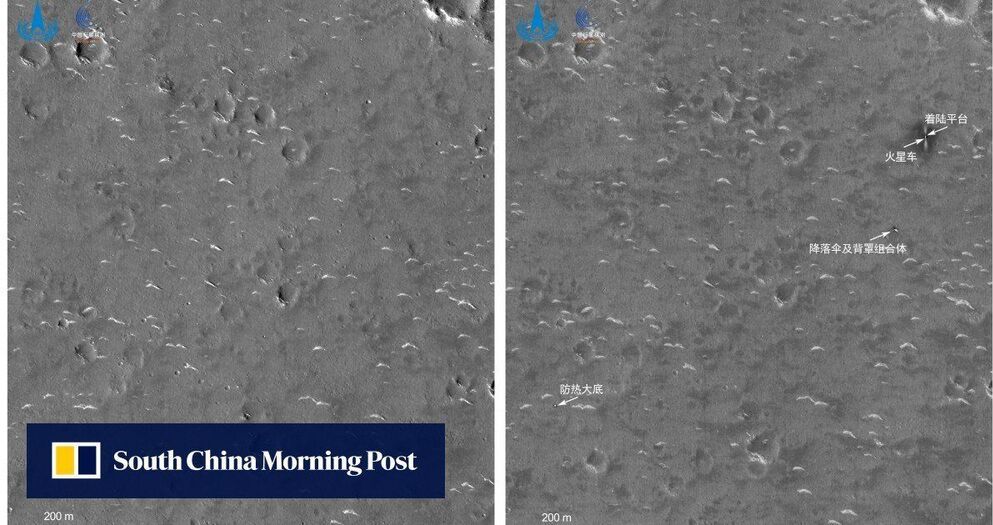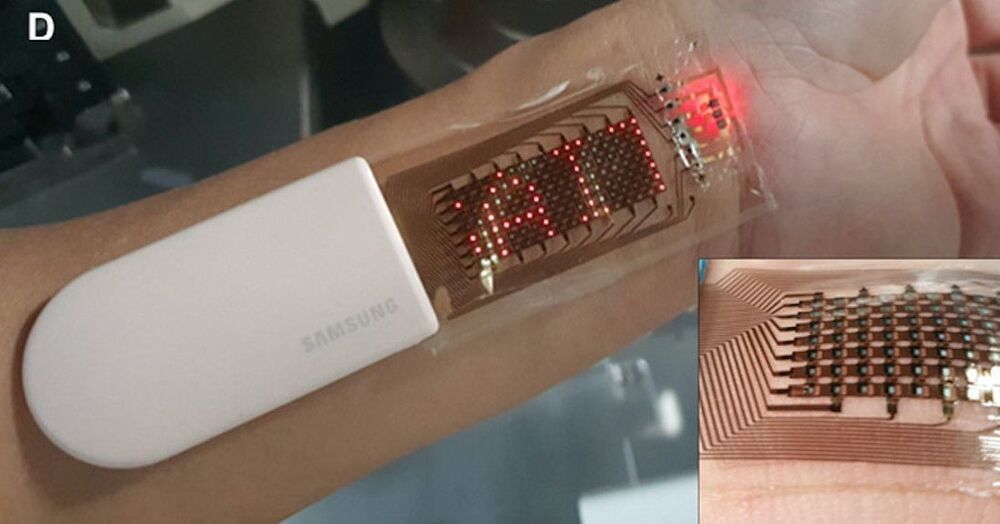Therapy increases survival in grim diagnosis.



Misfits Market is an online grocery delivery service that sells “ugly” organic produce for cheap. In the first four months of 2021 alone, Misfits Market rescued the same amount of food it saved in 2020 as a whole. In 2020, Misfits Market shipped 77 million pounds of food to more than 400000 households across the U.S. Since launching in 2018, Misfits Market has expanded to both coasts, has over 1000 employees and has received over $300 million in funding. Bloomberg reports its valuation tops $1 billion, putting it into unicorn territory. But Misfits Market wasn’t an obvious success. In fact, it was just one of many businesses started by its 29-year-old founder Abhi Ramesh.
» Subscribe to CNBC Make It.: http://cnb.cx/2kxl2rf.
About CNBC Make It.: CNBC Make It. is a new section of CNBC dedicated to making you smarter about managing your business, career, and money.
Connect with CNBC Make It. Online.
Get the latest updates: https://www.cnbc.com/make-it.
Find CNBC Make It. on Facebook: https://cnb.cx/LikeCNBCMakeIt.
Find CNBC Make It. on Twitter: https://cnb.cx/FollowCNBCMakeIt.
Find CNBC Make It. on Instagram: https://bit.ly/InstagramCNBCMakeIt.
#CNBC #CNBCMakeIt #MisfitsMarket.
How abhi ramesh built misfits market
Misfits Market is an online grocery delivery service that sells “ugly” organic produce for cheap. In the first four months of 2021 alone, Misfits Market rescued the same amount of food it saved in 2020 as a whole. In 2020, Misfits Market shipped 77 million pounds of food to more than 400000 households across the U.S. Since launching in 2018, Misfits Market has expanded to both coasts, has over 1000 employees and has received over $300 million in funding. Bloomberg reports its valuation tops $1 billion, putting it into unicorn territory. But Misfits Market wasn’t an obvious success. In fact, it was just one of many businesses started by its 29-year-old founder Abhi Ramesh.
» Subscribe to CNBC Make It.: http://cnb.cx/2kxl2rf.
About CNBC Make It.: CNBC Make It. is a new section of CNBC dedicated to making you smarter about managing your business, career, and money.
Connect with CNBC Make It. Online.
Get the latest updates: https://www.cnbc.com/make-it.
Find CNBC Make It. on Facebook: https://cnb.cx/LikeCNBCMakeIt.
Find CNBC Make It. on Twitter: https://cnb.cx/FollowCNBCMakeIt.
Find CNBC Make It. on Instagram: https://bit.ly/InstagramCNBCMakeIt.
#CNBC #CNBCMakeIt #MisfitsMarket.
How abhi ramesh built misfits market Billion Start-Up Called Misfits Market” | >


The study found that children following vegan diets were on average 3 cm (1.2 inches) shorter, had 4–6% lower bone mineral content and were more than three times more likely to be deficient in vitamin B-12 than the omnivores.
Children on vegan diets have a healthier cardiovascular profile and less body fat than their omnivore peers, but the diets may affect growth, bone mineral content and micronutrient status, according to researchers from UCL Great Ormond Street Institute of Child Health and the Children’s Memorial Health Institute in Warsaw, Poland.
The peer-reviewed study, published in the American Journal of Clinical Nutrition, also found that children following vegetarian diets had a lower risk of nutritional deficiencies compared to the omnivores, but a less healthy cardiovascular profile.
For the study, 187 healthy 5 to 10-year-olds in Poland were recruited in 2014–2016. Of those, 63 children were vegetarians, 52 vegans and 72 omnivores. The team then collected data on growth, body composition, cardiovascular risk, and micronutrient status in vegetarian or vegan children and compared them to the group of children who consumed meat in their diet.
Many people are looking for ways to reduce their consumption of animal products. And these days, there are a ton of plant-based alternatives to help them do that. But many companies are working on ways to make animal-free animal products like meats, milk, and even egg whites. So, it may soon become possible to eat less meat without actually eating less meat!
Hosted by: Hank Green.
SciShow has a spinoff podcast! It’s called SciShow Tangents. Check it out at http://www.scishowtangents.org.
———
Support SciShow by becoming a patron on Patreon: https://www.patreon.com/scishow.
———
Huge thanks go to the following Patreon supporters for helping us keep SciShow free for everyone forever:
Alisa Sherbow, Silas Emrys, Drew Hart. Jeffrey Mckishen, James Knight, Christoph Schwanke, Jacob, Matt Curls, Christopher R Boucher, Eric Jensen, Adam Brainard, Nazara, GrowingViolet, Ash, Sam Lutfi, Piya Shedden, KatieMarie Magnone, charles george, Alex Hackman, Chris Peters, Kevin Bealer, Jason A Saslow.
———
Looking for SciShow elsewhere on the internet?
Facebook: http://www.facebook.com/scishow.
Twitter: http://www.twitter.com/scishow.
Tumblr: http://scishow.tumblr.com.
Instagram: http://instagram.com/thescishow.
———
Sources:
https://www.npr.org/sections/thesalt/2019/08/02/747026144/da…hout-anima.
https://perfectdayfoods.com/process/
https://www.tandfonline.com/doi/abs/10.1080/17530350.2018.14…ode=rjce20
https://www.foodnavigator.com/Article/2021/02/09/Clara-Foods…-egg-white.
https://link.springer.com/article/10.1007/s10640-021-00551-3#Sec3
https://www.bbc.com/news/business-55155741
https://www.bbc.com/news/world-us-canada-45865403
https://www.cnbc.com/2020/12/18/singapore-restaurant-first-e…icken.html.
https://www.theguardian.com/environment/2020/dec/02/no-kill-…first-time.
https://www.bloomberg.com/news/articles/2019-10-22/c…oming-soon.
https://www.nature.com/articles/s41538-021-00090-7
https://www.sciencedaily.com/releases/2019/10/191021082759.htm.
https://www.newscientist.com/article/2269671-lab-grown-meat-…20a%20step, structure%2C%20rather%20than%20just%20mince.
https://www.sciencedirect.com/science/article/pii/S0306919216304973
https://www.sciencedirect.com/science/article/abs/pii/S0262407914612604
https://www.ncbi.nlm.nih.gov/pmc/articles/PMC5149046/#:~:tex…exes%20(20)
https://www.sciencedirect.com/science/article/pii/S0924224417303400
https://www.sciencedirect.com/science/article/pii/S0958166919301417
Images:

Flying taxis, more technically known as electric vertical take-off and landing (eVTOL) vehicles, might actually — finally — become a feasible technology thanks to a new development in battery technology.
Ironically, the hardest part of designing and building eVTOLs isn’t the vehicle itself. Instead, it’s solving the challenging energy situation that eVTOLs face: Any battery that’s powerful enough to lift the thing is almost certainly too heavy and slow-charging to make a trip worthwhile. But a team of Pennsylvania State University engineers tested new batteries that can both recharge in a matter of minutes and survive thousands of charge cycles, according to research published Monday in the journal Joule, making eVTOLs seem a whole lot more realistic.
The energy-dense lithium-ion batteries represent a major leap forward in electric vehicle energy tech, according to The Independent. Both could be charged for a 50-mile journal in under ten minutes, making eVTOLs far more economically viable because each vehicle could take more trips per day.

Researchers have discovered a new electronic property at the frontier between the thermal and quantum sciences in a specially engineered metal alloy—and in the process identified a promising material for future devices that could turn heat on and off with the application of a magnetic “switch.”
In this material, electrons, which have a mass in vacuum and in most other materials, move like massless photons or light—an unexpected behavior, but a phenomenon theoretically predicted to exist here. The alloy was engineered with the elements bismuth and antimony at precise ranges based on foundational theory.
Under the influence of an external magnetic field, the researchers found, these oddly behaving electrons manipulate heat in ways not seen under normal conditions. On both the hot and cold sides of the material, some of the electrons generate heat, or energy, while others absorb energy, effectively turning the material into an energy pump. The result: A 300% increase in its thermal conductivity.


Forget flexible, get stretchable.
We’ve had curved displays for a while now, but what about stretchy ones? Samsung says it’s making progress building screens “that can be stretched in all directions like rubber bands,” and that the first applications for this material could be in building flexible health tech.
The company’s researchers recently created an OLED display that can be stretched by up to 30 percent while operating as normal. As a proof of concept, engineers integrated this display into a stretchable heart rate monitor that can be stuck onto the skin like a Band-Aid.
“The strength of this technology is that it allows you to measure your biometric data for a longer period without having to remove the solution when you sleep or exercise, since the patch feels like part of your skin,” Samsung’s Youngjun Yun said of the prototype technology in a press statement. “You can also check your biometric data right away on the screen without having to transfer it to an external device.”